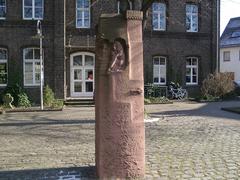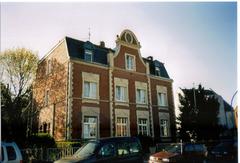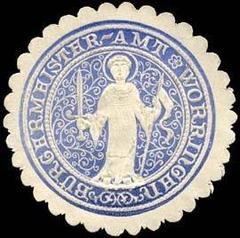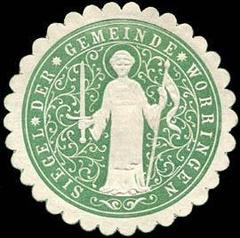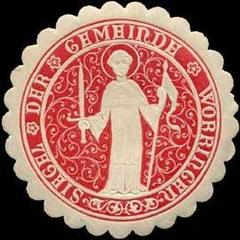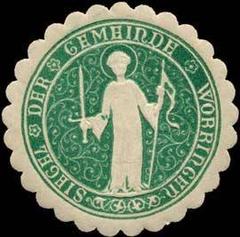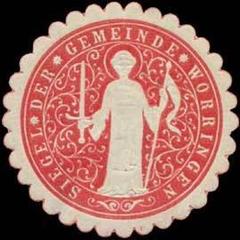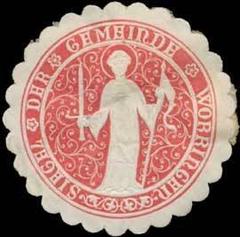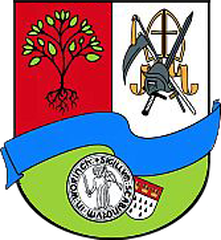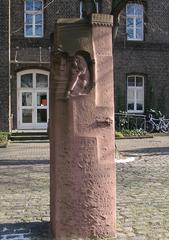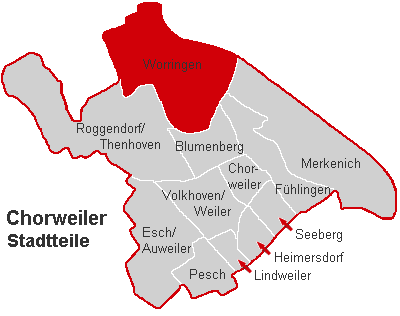
Worringen, Cologne, Germany: Visiting Hours, Tickets, and Historical Sites Guide
Date: 14/06/2025
Introduction: Worringen’s Rich Heritage
Situated in the northern part of Cologne, the district of Worringen presents a compelling destination for travelers seeking to connect with both the storied past and the evolving present of the Rhineland. While Cologne is famous for its Cathedral and vibrant city life, Worringen stands out as the site of the pivotal Battle of Worringen (1288), a turning point that contributed to Cologne’s independence and the decline of ecclesiastical rule in the region. Today, Worringen offers a blend of significant historical landmarks, tranquil natural reserves, and authentic local culture, making it an ideal stop for history buffs, families, and anyone interested in Cologne beyond the city center. For more background and visitor resources, consult Cologne Tourism and Wikipedia Battle of Worringen.
Table of Contents
- Early Origins and Medieval Foundations
- The Battle of Worringen (1288): A Defining Event
- Worringen’s Changing Role Over Time
- Visiting Worringen: Practical Information
- Local Culture and Cuisine
- FAQs
- Conclusion and Final Tips
- References
Early Origins and Medieval Foundations
Worringen’s history stretches back to the Middle Ages, with its strategic location along the Rhine influencing its role as both a rural outpost and a participant in trade and military affairs. By the 13th century, its proximity to Cologne made it significant in the feudal politics of the Holy Roman Empire (latlon-guide.com). As Cologne grew in power and influence, Worringen found itself drawn into the complex dynamics that shaped the region.
The Battle of Worringen (1288): A Defining Event
Causes and Context
Following the death of Duke Waleran IV of Limburg without a male heir, multiple regional powers vied for control of the duchy. This succession crisis drew in the Archbishop of Cologne, Count Henry VI of Luxembourg, Duke John I of Brabant, and others, culminating in a coalition that would clash near Worringen (Wikipedia).
The Battle and Its Scale
On June 5, 1288, over 9,000 combatants met near Worringen in what ranks among the largest battles of medieval Europe. The fighting was intense, with significant casualties and a decisive outcome (Scribd).
Outcome and Consequences
Victory by Duke John I of Brabant’s coalition led to the capture of the Archbishop of Cologne, dramatically reducing the Archbishop’s political power. This result paved the way for Cologne’s autonomy as a free imperial city, even though ecclesiastical influence lingered for years (almendron.com).
Worringen’s Changing Role Over Time
After the battle, Worringen returned to a quieter existence but remained symbolically important. By the 19th and 20th centuries, industrial expansion saw Worringen incorporated into Cologne (in 1922), blending its village roots with the metropolitan growth of the city (latlon-guide.com). Today, Worringen’s heritage is honored through memorials, local festivals, and community pride.
Visiting Worringen: Practical Information
Hours, Tickets, and Accessibility
- Battlefield Memorial: Open daily from 9:00 AM to 6:00 PM. Entry is free of charge.
- St. Pankratius Church: Open Monday–Saturday, 10:00 AM–5:00 PM; Sunday visits outside service times. Free entry; donations appreciated.
- Worringer Bruch Nature Reserve: Open year-round, dawn to dusk; free access.
- Guided Tours: Offered occasionally by local historical societies, especially during anniversaries or festivals. Advance booking and a nominal fee may be required.
- Accessibility: Paths and parks are generally accessible, though some historic buildings have limited wheelchair access. Check in advance with local visitor centers.
Getting There
- By Train: S-Bahn S11 from Cologne Hauptbahnhof (main station) to Köln-Worringen; journey takes around 20–22 minutes. Trains run frequently.
- By Bus: Regional buses connect Worringen with neighboring districts.
- By Car: Parking is available near main attractions, but can be limited during events. (Deutsche Bahn Navigator, Rome2Rio)
Nearby Attractions
- Rhine River Walks: Scenic riverside paths for walking or cycling.
- Worringer Bruch Nature Reserve: A haven for birdwatchers and nature lovers.
- Cologne Cathedral (Kölner Dom): Iconic Gothic cathedral, easily reached by train.
- Local Museums: Explore Rhineland history and medieval artifacts in central Cologne (Cologne Tourism).
Cultural Events and Guided Tours
- Schützenfest: Traditional marksmen’s festival with parades and local music.
- Worringen Carnival: Local processions and celebrations distinct from central Cologne festivities (Cologne Carnival).
- Historical Reenactments: On select anniversaries, the Battle of Worringen is commemorated with events and tours (almendron.com).
Photographic Highlights
- Battlefield Memorial: Especially picturesque at sunrise or sunset.
- St. Pankratius Church: Noteworthy architecture and stained glass.
- Rhine River Views: Panoramic photos of the river and Cologne skyline.
- Worringer Bruch: Wildlife and wetland landscapes.
Local Culture and Cuisine
Worringen’s pubs and bakeries serve Rhineland specialties such as Sauerbraten (marinated beef), Himmel un Ääd (mashed potatoes with apple sauce and black pudding), and Kölsch beer. These family-run establishments offer a taste of genuine local hospitality. Brewery tours in central Cologne are also easily accessible for those interested in regional drinks (Cologne Breweries).
Frequently Asked Questions (FAQs)
Q: What are the visiting hours for the main historical sites?
A: Most sites, including the battlefield memorial and parks, are open from 9:00 AM to 6:00 PM. The nature reserve is open dawn to dusk.
Q: Is there an entrance fee?
A: Most sites are free; guided tours may require a small fee.
Q: Are there guided tours in English?
A: Occasionally, especially during major festivals or anniversaries. Check with local historical societies in advance.
Q: How accessible is Worringen for visitors with disabilities?
A: Many outdoor areas and transportation links are accessible, but some older buildings may have limited access.
Q: How do I get to Worringen from Cologne city center?
A: Take S-Bahn S11 from Köln Hauptbahnhof; journey is approximately 20–22 minutes.
Q: Where can I find information about local festivals?
A: Check Cologne Tourism and local community boards for event dates and details.
Conclusion and Final Tips
Worringen invites visitors to step into a living chapter of medieval European history against the backdrop of modern-day Cologne. Its blend of heritage, scenic nature, and community spirit offers a holistic visitor experience. To make the most of your trip:
- Check official sources for up-to-date visiting hours, tour schedules, and event details.
- Plan your transport using the S-Bahn or local buses.
- Attend a local festival or guided tour for a deeper understanding of Worringen’s legacy.
- Bring a camera to capture both historical landmarks and natural beauty.
- Sample traditional cuisine for an authentic taste of the Rhineland.
For personalized audio guides, event updates, and insider tips, download the Audiala app and follow us on social media.
References
- Cologne Tourism
- Cologne History Facts and Timeline
- Latlon Guide to Cologne
- Battle of Worringen - Wikipedia
- The Battle of Worringen 1288 - Scribd
- Worringen - Almendron.com PDF
- Cologne Breweries
- Cologne Carnival
- Cologne Tourist Info
- Deutsche Bahn Navigator
- Rome2Rio
- Cologne Accessibility
- Cologne Accommodation
- Cologne Safety
- Cologne Weather
- Cologne Events
- Cologne Attractions
- Cologne Museums
For more in-depth guides and updates, visit the official tourism websites and related resources linked above.

